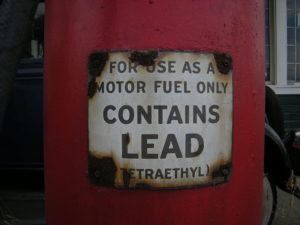High lead poisoning rates found in California communities
March 27, 2017
 Though not typically associated with California communities, childhood lead poisoning is prevalent in several areas of the state, particularly Fresno County. At least 29 California communities have childhood lead poisoning rate that are at least as high as in Flint, Michigan, which recently came under the national spotlight because of its water crisis. [Reuters]
Though not typically associated with California communities, childhood lead poisoning is prevalent in several areas of the state, particularly Fresno County. At least 29 California communities have childhood lead poisoning rate that are at least as high as in Flint, Michigan, which recently came under the national spotlight because of its water crisis. [Reuters]
According to blood testing data obtained from the California Department of Public Health, there is one zip code in Central Fresno where 13.6 percent of blood tests on children under six years old returned high for lead.
Fresno County has a total of nine zip codes in which high lead levels among children are at least as common as in Flint, according to the state data. High poverty rates and issues with substandard housing — both of which are problems in fresno — are risk factors for lead exposure.
Blood tests do not determine the cause of a child’s lead poisoning. The sources of exposure can be tainted drinking water, contaminated soil, crumbling old paint and other lead hazards.
High rates of childhood lead exposure are also found in Alameda County, the Los Angeles area, Eureka and Monterey.
Currently, only a fraction of children in California are tested for lead contamination. Also, unlike in other states, California’s Public Health Department withheld zip codes where fewer than 250 children were screened, claiming those results were less reliable.
The Public Health Department also said comparisons between its blood lead test results and other states’ results are not warranted. California tests children deemed at risk for lead exposure, such as those enrolled in Medicaid or living in older housing, state health officials said.
“Testing of at-risk children, and not all children, skews California results to higher percentage of children tested showing lead exposure,” the state health department said.
Nationwide, about 3,000 neighborhoods have lead poisoning rates double those found in Flint. Despite national strides in eliminating lead-based products, hazards remain across the country, not just in the Rust Belt or East Coast regions, which have a lot of old housing and legacy industry.
The Centers for Disease Control and Prevention (CDC) sets the threshold for an elevated lead reading at 5 micrograms per deciliter of blood. The CDC says no level of lead exposure is safe, but children who test that high warrant a public health response.
Last December, Assemblyman Bill Quirk (D-Hayward) introduced a bill that would require blood screening for lead for all California children.






The comments below represent the opinion of the writer and do not represent the views or policies of CalCoastNews.com. Please address the Policies, events and arguments, not the person. Constructive debate is good; mockery, taunting, and name calling is not. Comment Guidelines